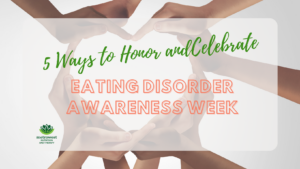
Using Social Thinking to Teach Mindful Eating to Kids
Social Thinking is a technique used to teach social skills to kids with social learning disabilities, particularly
those on the autism spectrum. Many school systems use this model to teach ALL kids about social construct. Developed by Michelle Garcia
Winner, this model teaches students to think about how others perceive them in the world using concrete analogies. For example, check out
this video looking at “super-flex thinking” vs “rock brain” thinking. I reference
the zones of regulation, one component of Social Thinking a lot when working on food choice with
my clients who are on the spectrum.
The image here gives you a good idea what each zone looks like.
The system allows kids to evaluate how “regulated” they are using visuals; green is optimal.
Let me provide an example of what this model looks like when applied to eating. On Mother’s Day, we took the kids to the mall. While we had
hoped to spend the day outside, the weather didn’t cooperate. So, instead, we went to get my son some much-needed new sneakers – red
Nikes with laces, specifically (insert raised eyebrow). I’m amazed that at the age of 6, brand sensitivity has already set in but
that’s a whole other blog entry. We pass a candy store. Correction… we stop dead in our tracks in front of a candy store. I’m feeling
generous and “super flexible” and suggest the kids each go in and pick out a piece of candy. My son picks out a rather
large red Airhead and I knew we were in trouble. But, as a clinician working with eating disorders, I am deadset determined to be open
and inclusive when it comes to my kids’ food selection. Not suprisingly, 30 minutes later we were in complete and utter meltdown mode. I’m talking
beyond comprehension, 5-alarm fire combustion mode seemingly out of the blue. I asked him what zone he was in and when he answered “red” I then
asked “what can you do?” and he said “breathe” so that’s exactly what we did, we breathed; long breath in, longer breath out. Once he had
calmed down enough and we were walking towards the car, I asked him if he could identify what put him in the red zone.
His immediate response was “you didn’t get me legos” and I said, “I know you’re disappointed that we didn’t get legos today but would you
call this an ant or dinosaur problem?” He answered “ant”. Phew (I wasn’t sure which way this might go given legos are such a hot commodity).
I then asked “do you think it might have had something to do with the candy?”
We went on to talk about paying attention to how different foods feel in his body, including how his body reacts to food.
I think to myself proudly “look at this, I’m teaching him intuitive eating!” We often discuss the possibility of a “red zone”
experience prior to making food selections, weighing the pros and cons. Sometimes we end up just going for it, knowing
we might pay the price and other times we come up with an alternative selection. No matter what the age, mindful eating is possible. Drawing
a causal relationship between food and our physical/emotional states puts kids in the position to make conscious decisions starting from an early age.
Kids have so little time to connect with their bodies these days and this is one way, we as adults can help them do just that.



